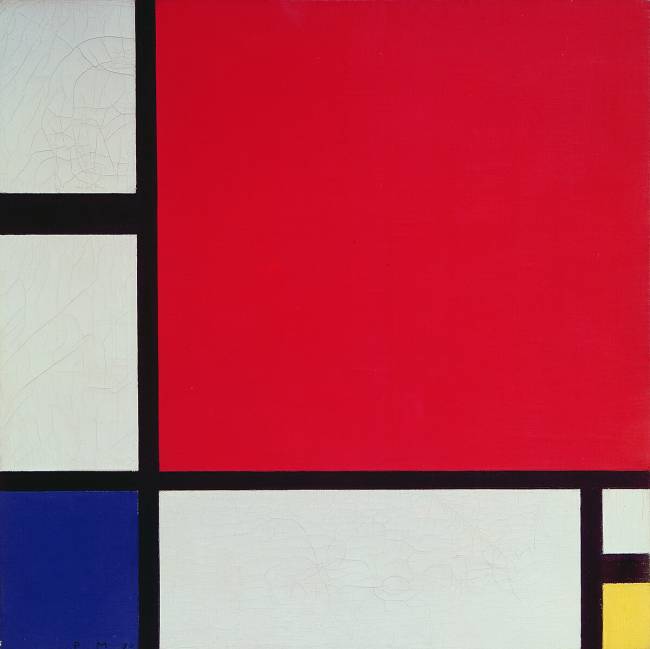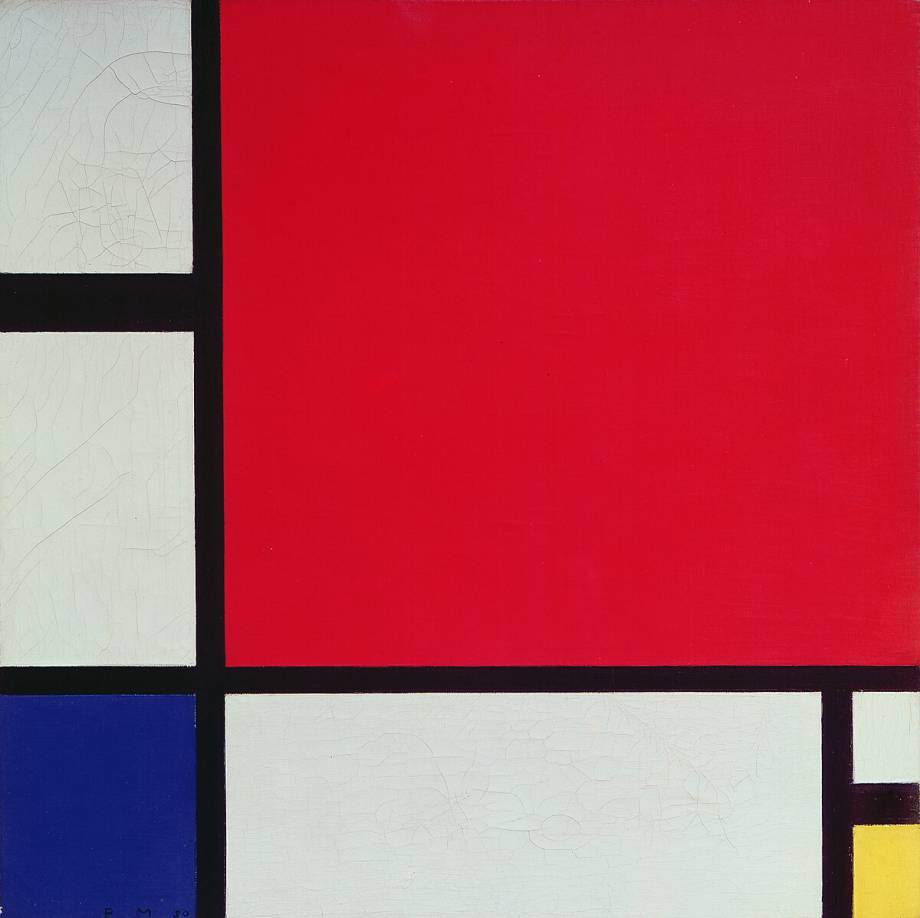Shop art print and framed art Composition II with Red, Blue and Yellow by Piet Mondrian
Customise
Your art print
Composition II with Red, Blue and Yello... OF Piet Mondrian
Composition II with Red, Blue and Yellow
Historical background and creation of Composition II in red, blue and yellow: a major work by Piet Mondrian
Piet Mondrian, born in 1872 in the Netherlands and died in 1944 in New York, was an artist fascinated by the search for harmony and balance between shapes and colours. He was initially inspired by the Impressionist movement, then the Cubist movement, before finally focusing on abstraction.
The painting Composition II in Red, Blue and Yellow, by the Dutch artist, is considered one of his most emblematic works. It was created in 1930, a period when Mondrian was breaking away from figurative principles to create abstract compositions. It represents a crucial stage in the process of evolving and asserting his personal style, which would come to be known as "neoplasticism" or "De Stijl style" in reference to the Dutch art movement of the same name, of which he was a founding member.
Visual description of Composition II in red, blue and yellow
The composition of this work is characterised by the simplicity and rigour of its elements. It is an oil painting on a 45cm square canvas. The painting is composed of a few fundamental geometric shapes: rectangles and squares arranged in a vertical-horizontal balance.
The main colours used in this composition are red, blue and yellow, which incidentally give the work its name. These three primary colours, chosen for their symbolism of purity and energy, are juxtaposed with black and white, consecrating a chromatic palette that is restricted but representative of the De Stijl style, of which Mondrian was one of the faithful exponents.
The black lines running across the surface of the painting form a regular grid that separates the coloured spaces from one another. This grid gives the composition a structured and harmonious appearance while allowing the different coloured areas to coexist without competing with each other.
In this painting, Mondrian sought to express his emotional state, highlighting the overall beauty that colour provides. To do this, he contrasts and tensions in order to bring out the essence of each colour. For example, the red, blue and yellow shapes are arranged asymmetrically, creating a natural tension between these coloured spaces. What's more, these colours are accentuated by the white surfaces that separate them, producing sharp, dynamic contrasts.
The role of Composition II in red, blue and yellow in Piet Mondrian's career
The influence of Composition II in Red, Blue and Yellow on Mondrian's artistic career is considerable. This work marks an essential turning point in his creative development and testifies to the gradual evolution of his approach towards a minimal abstraction that is nevertheless full of meaning.
By breaking with traditional figurative conventions and narrative representations, Mondrian develops through this composition a refined and universal visual language characteristic of Neoplasticism. The use of orthogonal shapes, as well as a restricted colour palette, allows the artist to express his vision of harmony and balance between elements.
The creation of this work also symbolised Mondrian's full embrace of the principles of the De Stijl movement, a Dutch artistic movement characterised by the simplicity and geometry of its works. Composition II in red, blue and yellow thus became a veritable icon of Mondrianian neoplasticism and a source of inspiration for contemporary artists.
The educational dimension of Composition II in red, blue and yellow
Beyond its artistic interest, Composition II in Red, Blue and Yellow is also a work with an educational dimension. Indeed, it provides a better understanding of how Mondrian orchestrated the constituent elements of his canvases to create visually harmonious and balanced compositions.
Several lessons can be drawn from this painting: the choice of a limited chromatic palette to avoid any unnecessary distraction, the establishment of a structuring grid that guides the viewer's gaze while ensuring the cohesion of the whole, and the judicious use of white surfaces as breathing spaces and carriers of light.
Through these various aspects, Composition II in red, blue and yellow thus embodies a perfect example of Piet Mondrian's artistic approach and bears witness to his relentless search for universal harmony through the study of shapes and colours.
This artwork is a painting from the modern period. It belongs to the abstract art style.
« Composition II with Red, Blue and Yellow » is kept at Private Collection.
Find the full description of Composition II with Red, Blue and Yellow by Piet Mondrian on Wikipedia.



































